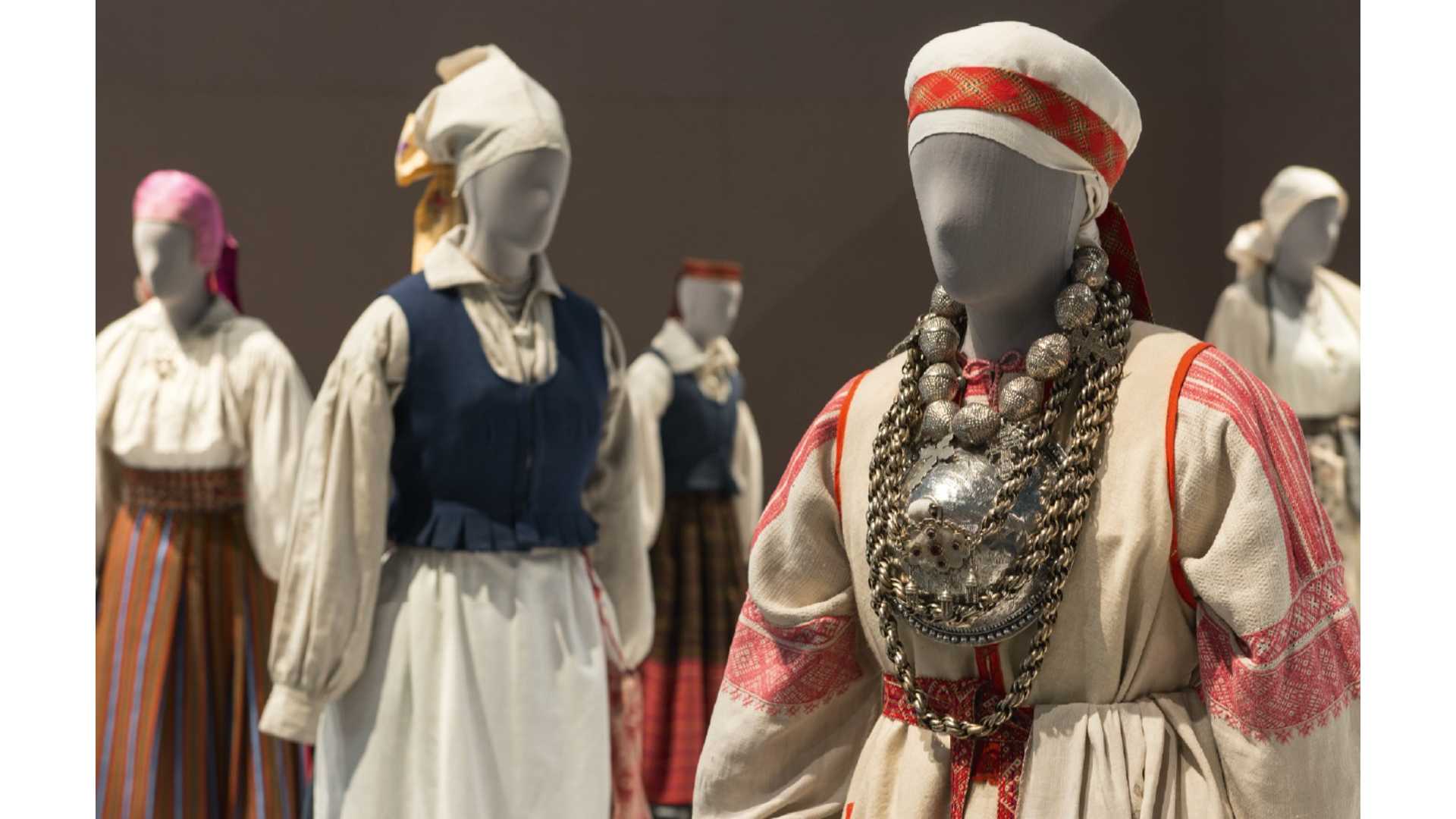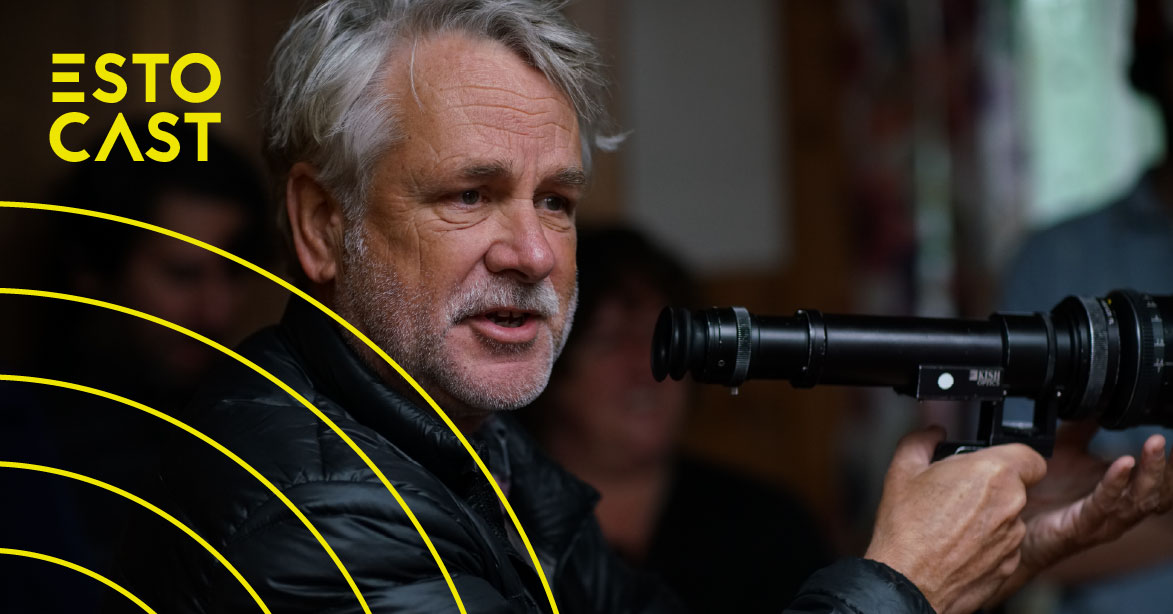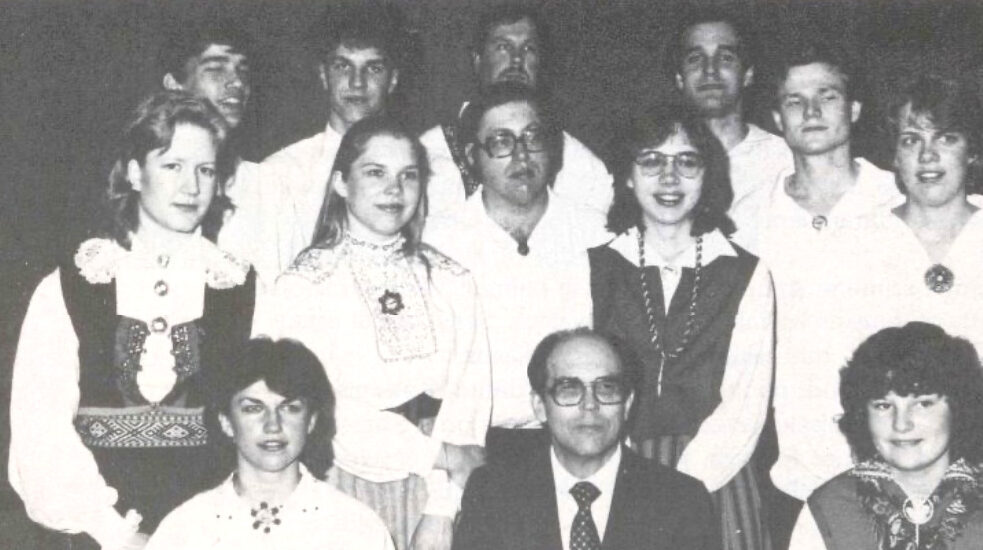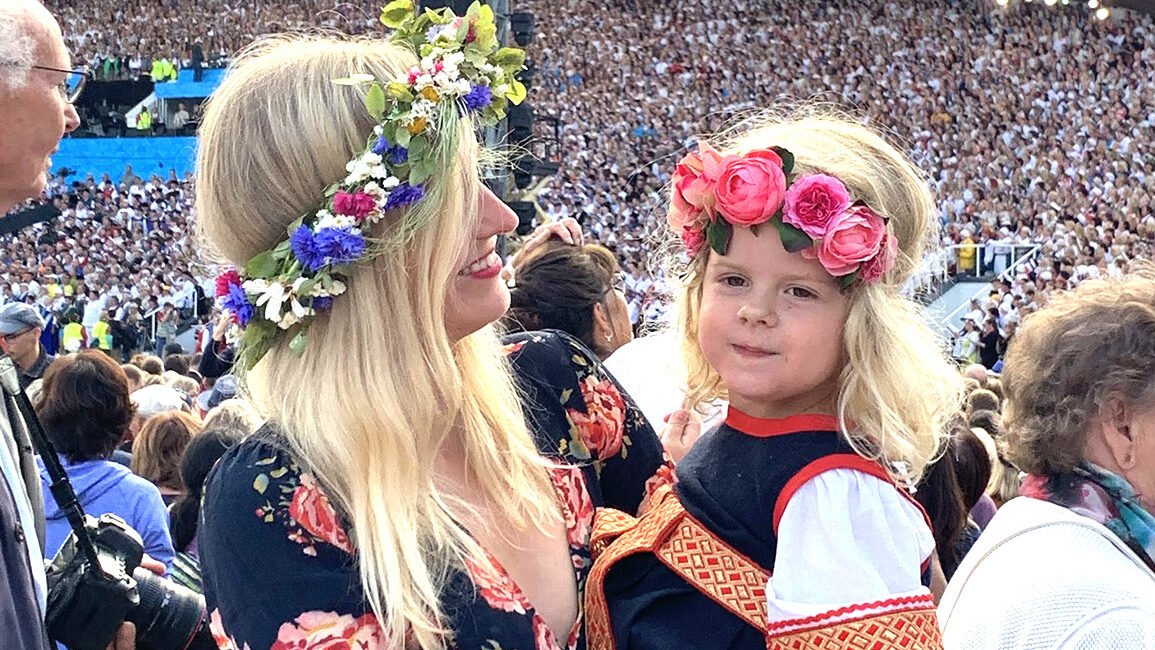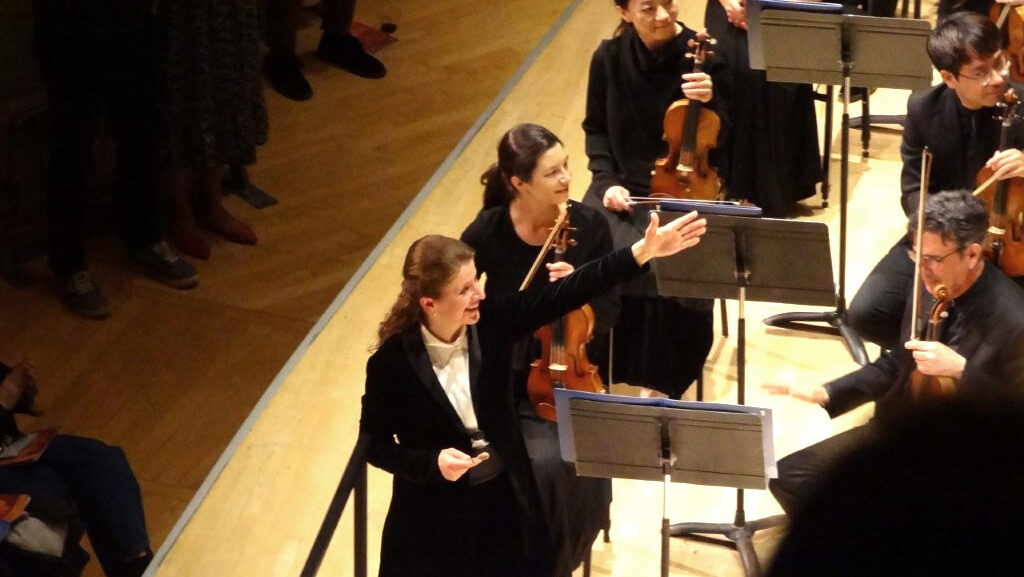The costumes are very personal. As Piret Õunapuu, formerly of the Estonian National Museum, wrote in one explanation of folk costume traditions for Eesti Instituut, “Young men and women received a complete set of festive clothes for confirmation, which marked their coming of age.” Clothes were either “festive”, used for less festive errands and visits, or they were more ordinary “working clothes.” And these days, Õunapuu adds, folk costumes “basically mean the festive clothing dating from the first half of the 19th century.”
At one point or another, to pass on a folk costume requires an individual to make items like hats, tunics, waistcoats, skirts, coats, belts, and trousers. Owners, in turn, must be vigilant to maintain the condition of the clothing over years of perspiration and exposure to moths and other wool-hungry insects. If your family has managed to keep an entire set of rahvariided in good condition over the years, kiitus teile!
What if the set of rahvariided you've been given is damaged beyond repair, or you weren't handed down a folk costume, though? You don't need rahvariided to take part in Estonian culture, but the fulfilling experience of connecting to your roots through clothing is within reach. The trouble is knowing which kind you should wear.
Across Estonia, dozens of traditional costume styles exist depending on the purpose, location, and stage in life of the wearer.
Firstly, identify where you'll wear the costume. Not all events or seasons will warrant wearing a full ensemble, complete with items such as a heavy coat and hat. If you see yourself using the costume for folk dancing, perhaps you'd like to stick to more practical items—a white tunic, a colourful waistcoat, long socks, and either trousers or a patterned skirt—to allow for easy movement.
Foreseeing its use in cold temperatures, or just to just have every item on hand as needed, you could go the way of men from Mulgimaa: a tall black felt kaabu (hat), a long black wool coat with red trim, a red patterned vöö (belt) to tie at the waist, and leather boots. The aforementioned white shirt and trousers form the base of the outfit.
It'll help focus your search if you identify what region you'd like to source the design from. Think about your connection to Estonia. Where did your ancestors come from? Then again, maybe you want to choose a style based on looks alone.
Depending on how much you're looking to follow tradition, there are numerous concepts that augment the design and items worn. For example, married women traditionally covered her hair and wore an apron. Visit Setomaa says of their own region's rahvariided that “The proudest part of the Seto woman's folk costume is its silver jewelry. It's said that one can hear a Seto woman coming before one sees her, because her silver chains and dangling coins make so much noise. The emblem of a married woman is a great brooch: it shows she is of fertile age and protects the woman's most sensitive place, her soul, from the evil eye.”
One book with a pictorial focus to help you analyze the outfits is Eesti rahva rõivad, compiled by Annika Jalava, which shows the photos of seven key photographers who documented rahvarõivad from before 1940.
If you have the courage to make your own costume by hand, MTÜ Rahvarõivas is one organization that has offered courses in this field. In 2021, the Estonian Cultural Society of Chicago launched a two year lecture series together with MTÜ Rahvarõivas, with the goal to guide participants to eventually make their own folk costumes. Many of the courses they promote are offered in Estonia, in Estonian, but contacting rahvaroivad@folkart.ee would be a sensible first step in finding the right course for you.
If making your own folk costume is not of interest, it's also possible to put in a custom order, though this will take time and extra cost, of course.
Through this same organization's website, you can search for costumes by region (north, south, west, or the islands) or kihelkond (parish). To identify the items you need, the organization recommends contacting their network of regional costume advisory boards, assembled in a joint effort with local museums and folk costume specialists. Each contact can guide you in acquiring one item or a full set, and also provide advice on maintenance.
A shop like Eesti Käsitöö Maja (Estonian Handicraft House, located at Pikk tänav 22 in Tallinn) sells authentic and folk costume-inspired items in their e-store and takes orders.
Alternatively, if you want to scavenge around more, “Rahvarõivaste ost-müük” is an active, public Facebook group where members buy and sell everything from tunics and hats, to fabric and vintage books on textiles.
The occasions in which you'll be able to wear a folk costume are not that numerous, and the search for your own set can be discouraging. Neither will all folk costumes be pristine artifacts from long ago like the kind you see in the Eesti Rahva Muuseum in Tartu.
Ultimately, though, it will be yours to keep and celebrate your identity when the right times come along.
This article was written by Vincent Teetsov as part of the Local Journalism Initiative.
